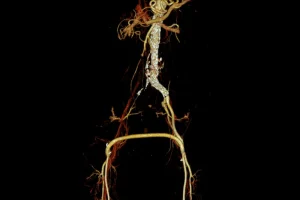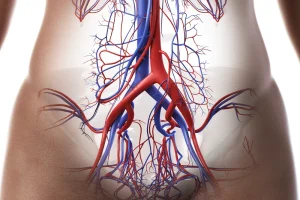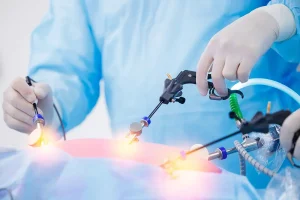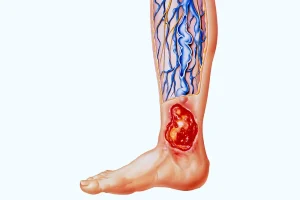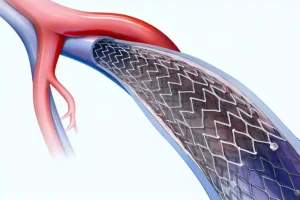Endovascular Stent Graft Arterial Angioplasty
Home » Arterial angioplasty with endovascular stent graft
Medical Procedures
Vascular Techniques
Endovascular Techniques
Conditions Treated

What Is an Endovascular Stent?
An endovascular stent is a tube made of fabric supported by a metal mesh, commonly used to repair an aneurysm—a weakened section of an artery. It supports the vessel wall and maintains blood flow, especially in cases where arterial integrity is compromised. This type of stent is integral in treating vascular conditions without requiring open surgery. Its minimally invasive nature makes it suitable for a wide range of vascular patients.
What Is the Role of Peripheral Arterial Stent Graft Angioplasty?
Left untreated, an aneurysm may enlarge over time and rupture, causing life-threatening complications. Peripheral arterial angioplasty with a stent graft is designed to prevent this scenario. The stent graft anchors firmly to the artery both above and below the aneurysm. It is stronger than the weakened artery wall, allowing blood to pass through without exerting pressure on the aneurysm, thereby greatly reducing the risk of rupture. This technique is typically used to treat abdominal and thoracic aortic aneurysms, though it may be applied to other locations when necessary.
Why Is Peripheral Arterial Angioplasty with Stent Graft Indicated?
Angioplasty with a stent graft is a modern, minimally invasive alternative to open surgery. Surgeons use advanced instruments and imaging guidance to ensure accuracy and safety. Following the procedure, patients usually benefit from shorter hospital stays, faster recovery, less pain, and reduced risk of postoperative complications. It is often the preferred method for patients who are not ideal candidates for open surgery.
How Does Peripheral Arterial Angioplasty with Stent Graft Take Place?
Before the procedure begins, you will receive a sedative and either regional or general anesthesia, based on your preoperative consultation. To minimize infection risk, the surgical team will clean the skin and shave the incision area. A small incision is made over the femoral artery in your groin. A guidewire is introduced through this access point and advanced up to the site of the aneurysm. Using live X-ray imaging, the surgeon passes a catheter over the wire, carrying the compressed graft. Once at the correct location, the catheter is withdrawn and the graft is deployed, expanding to seal tightly against the arterial wall above and below the aneurysm.
How Long Does Recovery Take After Peripheral Arterial Angioplasty with Stent Graft?
After the procedure, most patients remain in the hospital for two to three days. Recovery begins immediately—patients are encouraged to eat and walk as soon as possible. Once discharged, you should follow these care instructions:
- Do not drive until cleared by your doctor.
- You may shower, but avoid wetting your groin incisions until fully healed.
- Refrain from lifting objects heavier than 10 pounds for four to six weeks.
A follow-up visit is scheduled 7–10 days after discharge to check incision healing and overall condition. Further evaluations typically occur at one, three, and six months post-procedure to ensure the graft remains secure and functional. Afterward, annual imaging follow-ups are essential to monitor the aneurysm and stent performance.
Request an appointment
Risks of Peripheral Arterial Angioplasty with Stent Graft
Certain conditions may increase the risk of complications following this procedure, including:
- Chronic kidney disease.
- Non-ruptured but large aneurysms.
- Arterial blockages near the aneurysm site.
- Prior abdominal aortic aneurysm repair.
- Pre-existing heart or lung disease.
These factors should be discussed in detail with your vascular surgeon before the procedure.
Complications of Peripheral Stent Graft Angioplasty
While rare, potential complications include:
- Bleeding around the graft.
- Infection at the access site.
- Graft misplacement or migration.
- Fracture of the graft structure.
- Blockage of blood flow through the stent.
In some cases, blood may leak through the junctions of graft components or via small arterial branches feeding the aneurysm sac—a complication known as an endoleak. These issues can appear even years after successful stent placement. For this reason, long-term follow-up with periodic imaging is crucial to identify and manage such risks.

